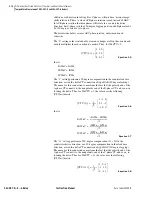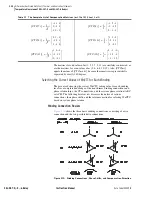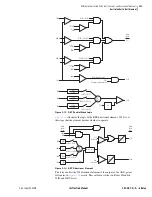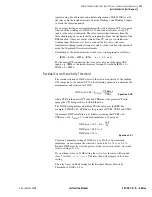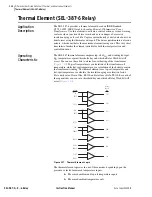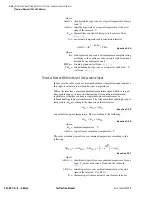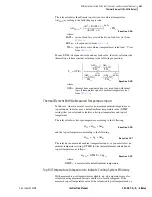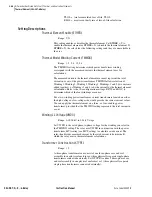
3.31
Date Code 20050919
Instruction Manual
SEL-387-0, -5, -6 Relay
Differential, Restricted Earth Fault, Thermal, and Overcurrent Elements
Temperature Measurement (SEL-387-5 and SEL-387-6 Relays)
As a rule of thumb, CT performance will be satisfactory if the CT secondary
maximum symmetrical external fault current multiplied by the total secondary
burden in ohms is less than half of the C voltage rating of the CT. The
following CT selection procedure uses this second guideline.
CT Ratio Selection for a Multiwinding Transformer
Step 1. Determine the secondary side burdens in ohms for all current
transformers connected to the relay.
Step 2. Select the CT ratio for the highest-rated winding (e.g., CTR1)
by considering the maximum continuous secondary current,
I
HS
, based on the highest MVA rating of the transformer.
For wye-connected CTs, the relay current, I
REL
, equals I
HS
. For
delta-connected CTs, I
REL
equals
√
3 • I
HS
. Select the nearest
standard ratio such that I
REL
is between 0.1 • I
N
and 1.0 • I
N
A
secondary, where I
N
is the relay nominal secondary current,
1 A or 5 A.
Step 3. Select the remaining CT ratios (e.g., CTR2–CTR4) by
considering the maximum continuous secondary current, I
LS
,
for each winding.
Typically, the CT ratio is based on the rated maximum MVA of
the particular winding. If this rating is much smaller than the
rating of the largest winding, you can violate the tap ratio limit
for the SEL-387 (see
and
). As before, for wye-
connected CTs I
REL
equals I
LS
. For delta-connected CTs I
REL
equals
√
3 • I
LS
. Select the nearest standard ratio such that I
REL
is between 0.1 • I
N
and 1.0 • I
N
A secondary.
Step 4. The SEL-387 calculates settings TAP1 through TAP4 if the
ratio TAP
MAX
/TAP
MIN
is less than or equal to 7.5. When the
relay calculates the tap settings, it reduces CT mismatch to less
than 1 percent. Allowable tap settings are in the range
(0.1–31) • I
N
.
Step 5. If the ratio TAP
MAX/
TAP
MIN
is greater than 7.5, select a
different CT ratio to meet the above conditions. You can often
do this by selecting a higher CT ratio for the smallest rated
winding, but you may need to apply auxiliary CTs to achieve
the required ratio. Repeat
through
Step 6. Calculate the maximum symmetrical fault current for an
external fault, and verify that the CT secondary currents do not
exceed your utility standard maximum allowed CT current,
typically 20 • I
N
. If necessary, reselect the CT ratios and repeat
through
Step 7. For each CT, multiply the burdens calculated in
by the
magnitude, in secondary amperes, of the expected maximum
symmetrical fault current for an external fault. Select a nominal
accuracy class voltage for each CT that is greater than twice the
calculated voltage. If necessary, select a higher CT ratio to
meet this requirement, then repeat
through
. This
selection criterion helps reduce the likelihood of CT saturation
for a fully offset fault current signal.
Note that the effective C voltage rating of a CT is lower than the nameplate
rating if a tap other than the maximum is used. Derate the CT C voltage rating
by a factor of ratio used/ratio max.
Summary of Contents for SEL-387-0
Page 10: ...This page intentionally left blank ...
Page 16: ...This page intentionally left blank ...
Page 56: ...This page intentionally left blank ...
Page 350: ...This page intentionally left blank ...
Page 388: ...This page intentionally left blank ...
Page 456: ...This page intentionally left blank ...
Page 494: ...This page intentionally left blank ...
Page 528: ...This page intentionally left blank ...


